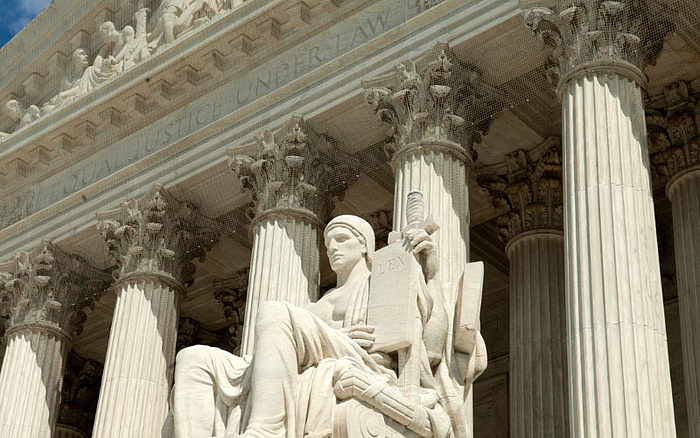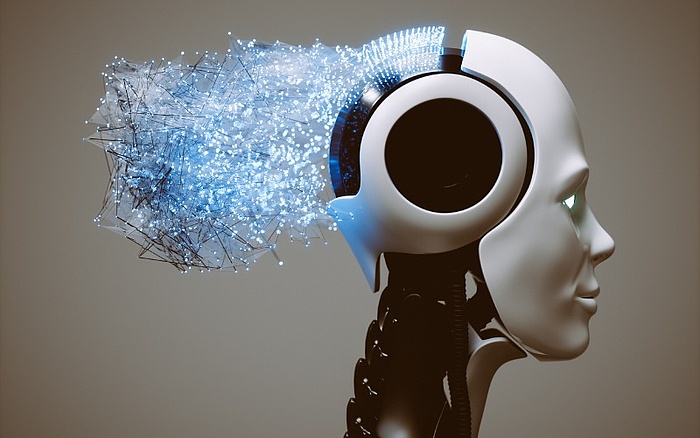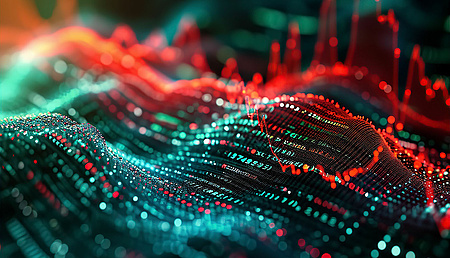
IP trends to watch in 2022
Even with the year barely off the ground, a number of hot-topic Intellectual Property (IP) trends are beginning to take shape for 2022. It is crucial to know what lies on the business horizon to be ready to meet it successfully.
At Dennemeyer, we like to be ahead of the curve in all things intangible, which is why we keep an ear to the ground and an eye open for future developments. Some of the IP trends we have identified as likely to have considerable presence in 2022 and beyond will come as small wonder to professionals in the sector, while others are much more novel, and may just take you by surprise.
Through Alice’s looking glass
Few recent decisions of the Supreme Court of the United States have been more impactful in the IP realm than 2014's Alice Corporation Pty. Ltd v. CLS Bank International. This keystone ruling articulated a two-step test for interpreting the implied limitation of §101 of U.S. Code Title 35 prohibiting the patenting of laws of nature, natural phenomena and abstract ideas. In a nutshell, the Court set out that an invention – in this case a scheme for mitigating the risk that only one party in a financial exchange will pay its dues – considered patent-ineligible due to its reliance on an abstract idea could become patent-eligible if its claims, considered "both individually and 'as an ordered combination,' 'transform the nature of the claim' into a patent-eligible application."
In practice, inventors and organizations have found the Alice ruling challenging to interpret. However, an upcoming case on the Supreme Court docket, American Axle & Manufacturing Inc. v. Neapco Holdings, will bring this issue to bear again. Previous U.S. Federal Circuit Court rulings on the case found the invention in question — a method of fabricating a shaft assembly for an automotive driveline system — simply replicates Hooke's law, a principle of elasticity, torsion and force. That the Supreme Court is taking such a case signifies a degree of uncertainty surrounding its earlier Alice ruling. Wherever there is a lack of clarity in procedural standards, IP professionals must pay particular attention to avoid setbacks.
Further controversy over IP law interpretation
Even if patents of nature are not in the nature of patents, there is lingering confusion regarding what digital innovations can and cannot be patented, specifically where software and, more recently, artificial intelligence (AI) are concerned.

Since the Alice ruling, there has been much doubt in the patent community about what constitutes patent-eligible subject matter in the United States. This has led to a number of petitions for writs of certiorari by patent owners seeking clarity from the Supreme Court.
The criteria for when software is eligible for a patent are notoriously finicky, as seen with the Alice decision. Nevertheless, as things stand, the language used in a patent application can sometimes be the deciding factor. Until the standards required for a software patent are fully elucidated, a well-crafted software patent application will claim a practical solution to user problems rather than the results or benefits of that same solution.
Outside of patents, software's interaction with copyright law will likely remain a hotly contested issue for the foreseeable future. In a recent noteworthy example, a copyright dispute between Google and Oracle lasting over a decade was finally settled by the U.S. Supreme Court in Google's favor on April 5, 2021. In developing its Android Operating System (Android OS), Google based its programming language on Oracle's Java. Being the older language, many programmers would likely already be familiar with Java, and so Android OS implemented much of the architecture and functionality of Java's Application Programming Interfaces (APIs). Working from the assumption that computer code is subject to copyright protection, the Court ruled that Google's coping of Oracle's coding was a legitimate fair use promoting the interests of science and the useful arts.
Worldwide rise in IP filings
Trademark, patent and industrial design application filings all rose during 2020, with respective increases of 13.7%, 1.6% and 2%. This is particularly notable in terms of patent filings as it marks a turnaround from a rare decline in 2019 on the back of nine consecutive years of growth. In light of the worldwide disruption witnessed throughout 2020, this upward trend breathes fresh optimism into the IP sector, reasonably indicating that innovation will continue to increase throughout this decade.
There is one surprising exception to this pattern: Patent filings in the United States have declined or been statistically stagnant for the past several years, except for an uptick in 2019. In 2020, America saw a 2% drop, while early indicators for 2021 point toward a further 0.4% decrease. The U.S. Chamber of Commerce noted in its 2021 edition of the International IP Index that "the patenting environment in the United States continues to be held back by uncertainty over what constitutes patentable subject matter and patent nullity proceedings through the inter partes review[…]. Since the Supreme Court decisions in the Bilski, Myriad, Mayo, and Alice cases, there has been a high and sustained level of uncertainty as to which inventions are patentable in the United States." Until the ambiguity surrounding patent eligibility in the United States can be resolved, inventors will need to be especially circumspect when seeking exclusivity rights in that jurisdiction.
AI technology empowering IP
AI has been making waves in recent years with its potential applications in all kinds of industries, including IP law. This technology allows companies to develop highly sophisticated software programs that can quickly assay large amounts of data while offloading time-consuming, tedious tasks from staff. What is more, in harnessing the potential of machine learning, that is, the capacity for an AI to be "trained" through all of its input data, the benefits of AI can be expanded even further. Refined analyses delivered by machine learning processes could inform better decisions about which patents deserve more resources or protection, based on their likelihood of commercial success over time.

As AI technology continues to evolve and reshape an ever-widening swath of industries, it is important that lawmakers take a proactive approach in updating IP laws to ensure that these new technologies are protected.
The ongoing impact of COVID-19
While the pandemic has undoubtedly had a tremendous impact on many aspects of IP law and work, it is important to note that practitioners' aligned response has allowed the industry to continue to thrive, as evidenced by the global figures seen above.
In early 2020, when lockdowns were just beginning to be implemented worldwide and many employees were forced to work remotely for the first time, businesses turned to technology like videoconferencing services to continue operating as efficiently as possible. This opened up new possibilities in areas such as remote patent prosecution that will likely lead to long-term structural and procedural changes even after we move beyond this crisis.
Unified Patent Court set to arrive
For various reasons, the EU's planned Unified Patent Court (UPC) has not been able to get off the ground since representatives of the EU Council agreed to its concept in 2013. But with Austria formally ratifying the UPC Agreement in January 2022, the Court's provisional application phase has finally begun. The UPC may be operational before the year's end.
The ramifications for the EU of a fully operational UPC are substantial. Anyone seeking patent protection in Europe would be able to gain it for 24 member states with a single application for a Unitary Patent. With a Europe-wide purview, the UPC will facilitate a stricter patent enforcement regime, effecting decisions and relief across the continent. While on the other hand, the Court will also afford third parties a new avenue for revocations, distinct from the opposition procedure of the European Patent Office.
The NFT dilemma
Much of the recent conversation about non-fungible tokens (NFTs) has centered around their investment value, especially in light of January 2022's massive cryptocurrency market collapse. But these assets seem all but guaranteed to start IP disputes: The artwork connected to NFTs — often bizarre illustrations, animations, video clips or other mixed-media pieces — is not what buyers purchase. Instead, they acquire an unalterable digital record of the transaction on the Ethereum blockchain, proving their ownership of the represented work. They do not typically receive the copyright to the represent work — a fact sometimes expensively misunderstood. Time will tell how these digital assets will be more harmoniously integrated into existing IP rights frameworks.

The idea behind this new digital art market is to create an unalterable record of ownership on a blockchain. This would theoretically prevent fraudulent sales and the manipulation of prices, as well as provide a permanent registry of all NFT-based artworks.
Some of the most consequential events of recent years could not have been predicted with any measure of confidence, but that is not to diminish the value of industry projections. On the contrary, in preparing for the digitalization of business ahead of time, the IP sector was largely prepared to adapt to the changes wrought by the COVID-19 pandemic. One can never be too ready.
At Dennemeyer, we are committed to helping you navigate the twists and turns of the IP landscape, wherever you are, wherever you are headed, whatever the road may bring.
Filed in

What are the three pillars of IP innovation, and how can C-suite members maximize the value of assets that are, by definition, less than concrete?



